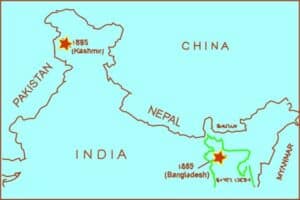
What is an Internship?
Internships are a fantastic way to gain hands-on experience in a particular field or industry while still in school or early in your career. They provide an opportunity to apply classroom knowledge to real-world situations, learn from professionals, and build valuable networks. Whether paid or unpaid, internships can be instrumental in shaping your career path by helping you discover your interests, strengths, and areas for growth.
If you’re considering an internship, think about what skills you hope to gain or develop, what industries or companies interest you, and how the internship aligns with your long-term goals. It’s also important to approach internships with a positive attitude, eagerness to learn, and willingness to take on challenges.
>>List of External Research Guide Teachers for Internship of ESDM, PSTU

>>How to Start an Internship
Starting an internship involves several steps to ensure you find the right opportunity and make the most of the experience:
-
Self-assessment: Reflect on your skills, interests, and career goals. Identify the type of internship that aligns with your aspirations and will help you develop professionally.
-
Research: Explore companies, organizations, and industries that interest you. Look for internship programs on their websites, job boards, or through networking connections.
-
Prepare your materials: Update your resume, highlighting relevant skills, experiences, and achievements. Write a compelling cover letter tailored to each internship application, expressing your interest and explaining why you’re a good fit.
-
Apply: Submit your application materials to internship openings that match your interests and qualifications. Pay attention to application deadlines and follow any specific instructions provided by the employer.
-
Interview: If selected, prepare for interviews by researching the company, practicing common interview questions, and showcasing your enthusiasm for the opportunity.
-
Acceptance: Upon receiving an offer, carefully review the terms and conditions of the internship, including compensation (if applicable), start date, duration, and expectations.
-
Prepare for the internship: Communicate with your internship supervisor or HR contact to clarify any questions you have about the role, responsibilities, and logistics. Make arrangements for transportation, housing (if needed), and any necessary paperwork.
-
Set goals: Before starting your internship, establish clear objectives for what you hope to achieve during your time there. This could include gaining specific skills, expanding your professional network, or exploring potential career paths.
-
Make a good impression: Arrive on time, dress appropriately, and demonstrate a positive attitude and strong work ethic. Be proactive in seeking out opportunities to contribute and learn.
-
Seek feedback: Throughout the internship, actively solicit feedback from supervisors and colleagues to identify areas of strength and areas for improvement. Use this feedback to continuously grow and develop professionally.
How to start an internship for disaster management
To pursue an internship in disaster management, consider the following steps:
-
Research: Look for organizations, government agencies, non-profits, and humanitarian aid groups involved in disaster management. Examples include the Red Cross, FEMA (Federal Emergency Management Agency), UNICEF, WHO (World Health Organization), and local emergency management offices.
-
Networking: Reach out to professionals working in the field of disaster management through networking events, conferences, or online platforms like LinkedIn. Networking can help you learn about internship opportunities and gain insights into the industry.
-
Check Websites and Job Boards: Many organizations post internship opportunities on their websites or on job boards like Indeed, Glassdoor, or Idealist. Check these regularly for openings in disaster management.
-
University Career Services: Utilize your university’s career services department, as they often have resources and connections to help students find internships, including those related to disaster management.
-
Tailor Your Resume and Cover Letter: Highlight any relevant coursework, skills, or experiences related to disaster management in your resume and cover letter. Emphasize your passion for helping communities prepare for and respond to disasters.
-
Apply: Submit your application materials to internship openings that align with your interests and qualifications. Follow any specific application instructions provided by the organization.
-
Prepare for Interviews: If selected for an interview, research the organization and familiarize yourself with their work in disaster management. Practice answering common interview questions and be prepared to discuss your interest in the field.
-
Stay Informed: Keep up-to-date with developments in the field of disaster management by reading news articles, research papers, and reports from relevant organizations.
-
Be Flexible: Internship opportunities in disaster management may involve fieldwork, data analysis, policy research, or community outreach. Be open to different types of experiences and roles within the field.
-
Make the Most of Your Internship: Once you secure an internship, immerse yourself in the experience. Take initiative, ask questions, and seek opportunities to learn from professionals in the field. Network with colleagues and supervisors, and demonstrate your commitment to making a positive impact in disaster management.




